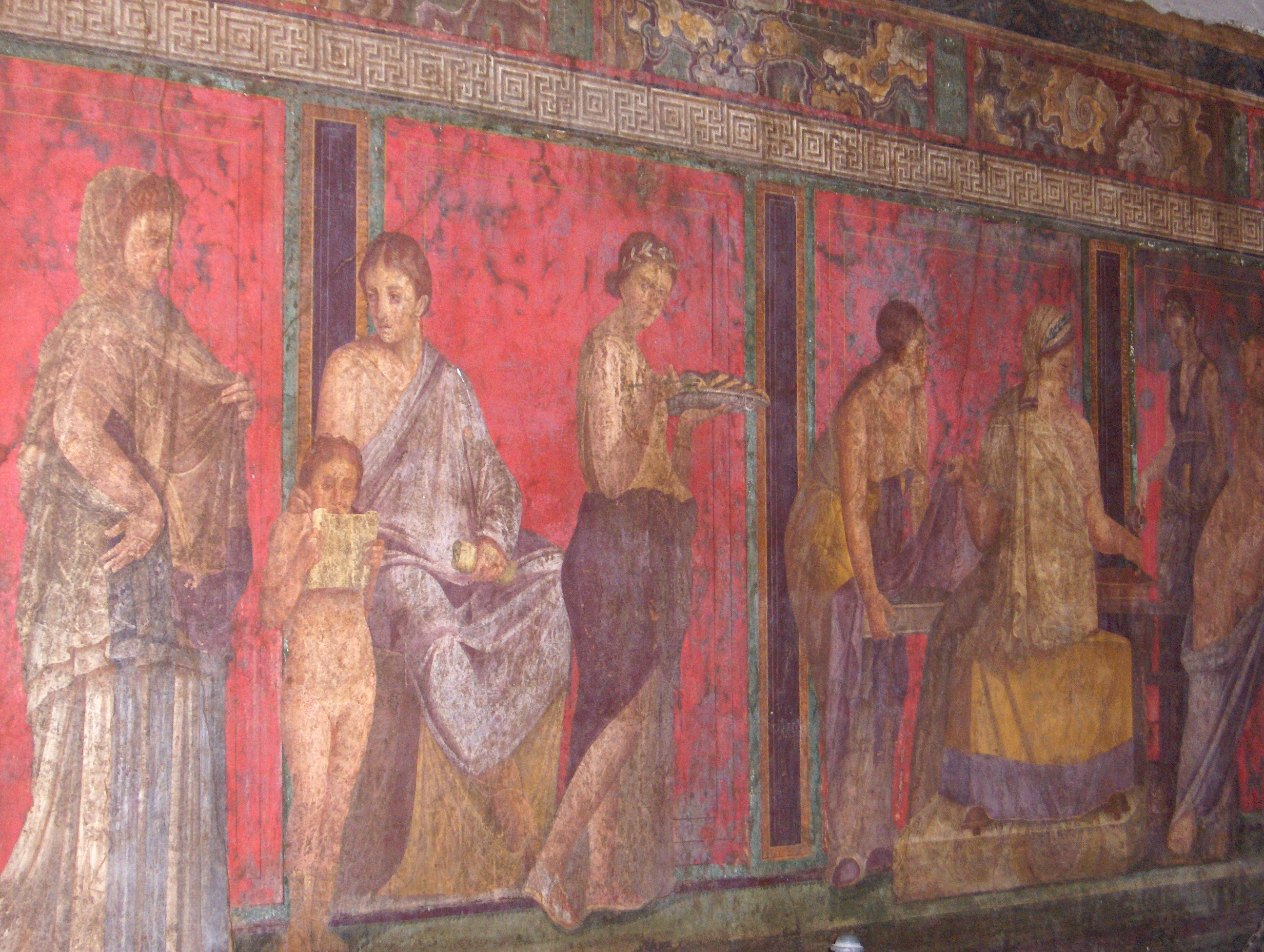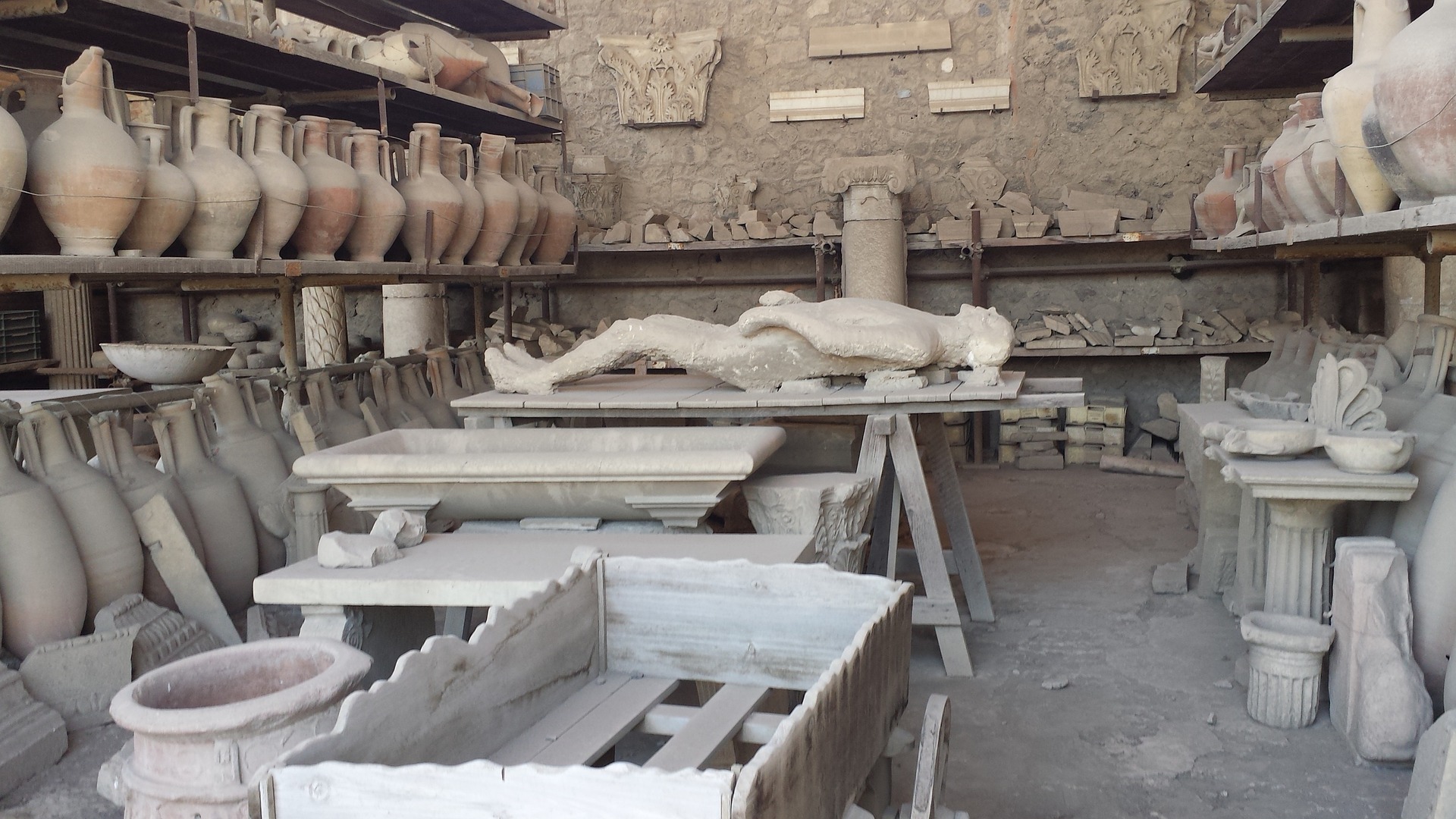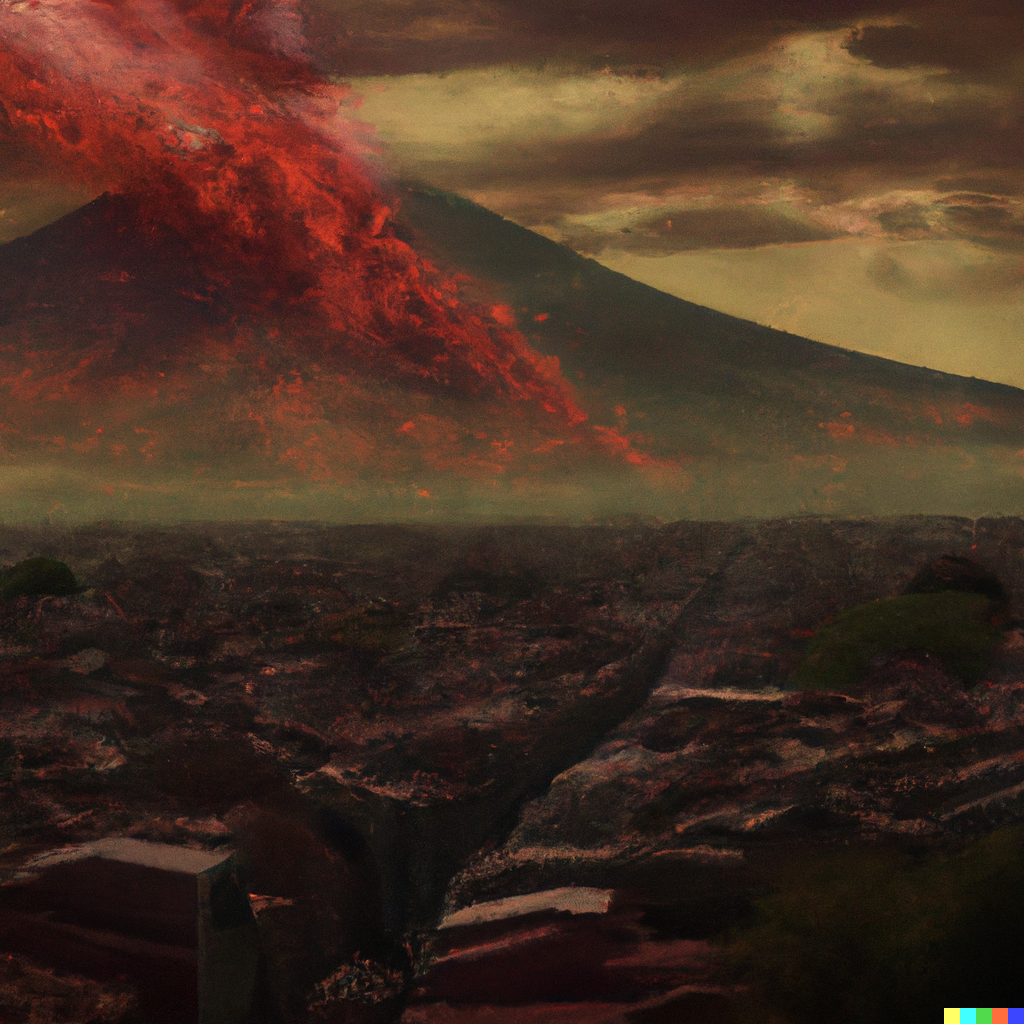Timeline:
- 6th or 7th century BC – Pompeii founded by the Osci people
- 4th century BC – Pompeii conquered by the Samnites
- 3rd century BC – Pompeii conquered by the Romans
- 62 AD – Pompeii damaged by an earthquake
- 79 AD – Pompeii destroyed by the eruption of Mount Vesuvius
- 1748 – Rediscovery of Pompeii by Spanish engineer Rocque Joaquin de Alcubierre
- 1860 – Pompeii becomes part of the newly unified Italy
- 1997 – Pompeii designated a UNESCO World Heritage Site
Pompeii is a famous ancient Roman city located near Naples in the Campania region of Italy. The city was founded in the 6th or 7th century BC by the Osci, an ancient Italic people. Later, in the 4th century BC, it was conquered by the Samnites, who were then defeated by the Romans in the 3rd century BC. Pompeii was an important commercial center in the Roman Empire, due to its strategic location on the Bay of Naples. The fertile soil at the base of Mount Vesuvius was ideal for growing grapes and olives, while their main industry was the industrial production of the condiment of the time garum, a fermented fish sauce. The proximity to the Bay, enables Pompeii to get many of its world class products to markets far across the Mediterranean.
Layout and daily life
The city of Pompeii had a population of around 11,000 people at the time of its destruction. The city was built on a grid system with wide streets, sidewalks, and drainage systems. The city was divided into nine regions, each with its own public spaces, markets, and temples.
- Region I – This region was located in the northeast corner of the city and was one of the oldest parts of Pompeii. It was home to several important public buildings, including the Macellum (a market hall) and the Temple of Apollo.
- Region II – This region was located to the east of the forum and contained many of the city’s wealthiest houses. It was also home to the House of the Faun, one of the largest and most luxurious houses in Pompeii.
- Region III – This region was located to the southeast of the forum and was known for its commercial activities. It contained several markets and workshops, as well as the House of the Vettii, a well-preserved example of a wealthy merchant’s house.
- Region IV – This region was located to the south of the forum and contained many of the city’s public buildings, including the amphitheater and the palaestra (an ancient gymnasium).
- Region V – This region was located to the west of the forum and contained many of the city’s public baths, including the Stabian Baths and the Forum Baths.
- Region VI – This region was located to the northwest of the forum and contained several important religious buildings, including the Temple of Jupiter and the Temple of Isis.
- Region VII – This region was located to the north of the forum and contained many of the city’s public buildings, including the public market and the Temple of Venus.
- Region VIII – This region was located to the west of the city and was primarily residential. It contained several large houses, as well as a number of taverns and shops.
- Region IX – This region was located to the northwest of the city and was primarily agricultural. It contained several vineyards and farms, as well as a number of tombs and cemeteries.
The daily life of Pompeii’s inhabitants was centered around the public spaces of the city, including the forum, amphitheater, baths, and More. The forum was the heart of the city was the city’s main public space. It was surrounded by important buildings, such as the Basilica (a courthouse), the Temple of Jupiter, and the Temple of Apollo. The amphitheater was used for gladiatorial contests, animal hunts, while the baths were a popular destination for socializing and relaxation.
Art, architecture, and public spaces
Pompeii is famous for its well-preserved art, architecture, and public spaces. The city’s architecture is characterized by its use of local materials such as tuff, a volcanic rock, and brick. The city’s public spaces, such as the forum and amphitheater, were designed to accommodate large crowds and were decorated with sculptures and reliefs.
Pompeii’s art was heavily influenced by Greek and Hellenistic styles as these artistic traditions were revered by the Roman elite, who saw themselves as the inheritors of Greek culture and civilization. Many of the city’s sculptures and frescoes depict mythological scenes and figures. These scenes and figures gave artists the ability to explore the Human condition in a way that was intellectually stimulating. The city’s frescoes, like the ones found in the Bath and around the Forum, are famous for their vivid colors and intricate details. Pompeii also had a thriving pottery industry, producing a wide range of ceramics decorated with scenes from daily life and mythological themes. This is perhaps best persevered by the House of Faun Mosaic, while private for contemporaries show case all the themes and mastery described.

Impact of the eruption of Mount Vesuvius
In 79 AD, Mount Vesuvius erupted and buried the city of Pompeii under a layer of ash and pumice. The eruption killed thousands of people and destroyed the city’s buildings, streets, and public spaces. The flow of hot ash cam so quickly that many citizens of Pompeii were buried alive. This has lead to a hauntingly fascinating ability for archeologists to understand in great detail where people died, many of the bodies have been molded to preserve this unique look into the people of the time. The city remained buried and forgotten for nearly 1,700 years until it was rediscovered in the 18th century.

The rediscovery of Pompeii sparked renewed interest in the art, architecture, and daily life of ancient Rome. Today, Pompeii is a popular destination for tourists and scholars alike, providing a window into the daily life of an ancient Roman city. The nature of the eruption left the city’s architecture, art, and public spaces well preserved and continues to inspire architects, artists, and historians around the world.
Deeper Reading:
- “Pompeii: The Life of a Roman Town” by Mary Beard
- “Pompeii” by Robert Harris
- “The Fires of Vesuvius: Pompeii Lost and Found” by Mary Beard
- “Pompeii: The Living City” by Alex Butterworth and Ray Laurence
- “Pompeii: The Last Day” by Paul Wilkinson

0 comment
[…] Mosaic is one of the most stunning and well-preserved examples of ancient Roman art. Located in Pompeii, Italy, the mosaic covers the entire floor of the largest room in the house, measuring […]